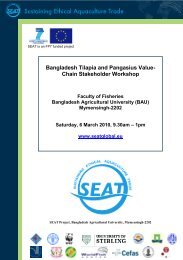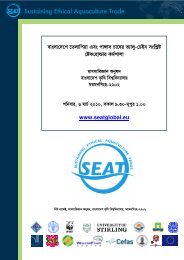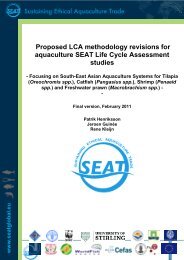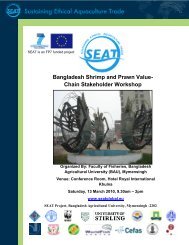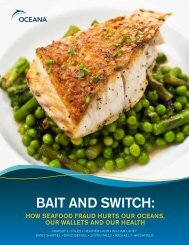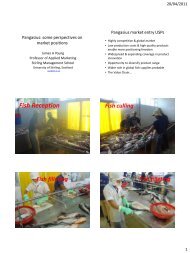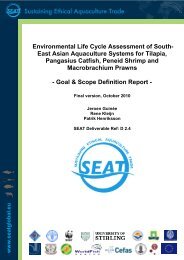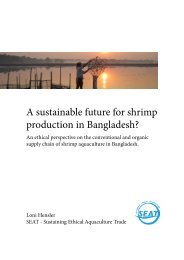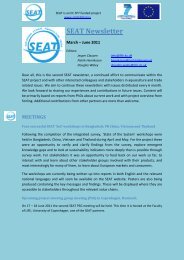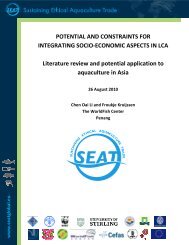English - SEAT Global
English - SEAT Global
English - SEAT Global
You also want an ePaper? Increase the reach of your titles
YUMPU automatically turns print PDFs into web optimized ePapers that Google loves.
- Scope for value-addition<br />
- Support from research institutes<br />
- Re-use of sludge rich in nutrients for other agriculture processes<br />
Threats<br />
- Competition with indigenous fishes and loss of biodiversity<br />
- Volatility in market and profitability<br />
- Conversion of agricultural land and wider food security impacts<br />
- Effluent management<br />
Group 2: Feed manufacturers and other service providers<br />
Presented by Md Mozahar Ali (Square Pharmaceuticals)<br />
Trends in aquaculture feeds<br />
- Huge changes have occurred in the fisheries (aquaculture) sector including a move<br />
from ‘loose’ (unprocessed) low quality feeds; oil-cakes, rice bran etc. to formulated<br />
sinking and floating pellets.<br />
- Less than 2% of farmers are using floating feeds but the level is growing<br />
- Floating feeds are more likely to include soy products (now mainly used in the poultry<br />
sector)<br />
- There are a total of around 100 commercial feed companies – approx. 40 of them<br />
‘large’.<br />
- Quality raw materials have a high cost (notably fish meal) for which there is<br />
competition with poultry sector. Many fish-farmers employed poultry feeds containing<br />
fish meal before specialist diets became available<br />
- Fishmeal was used mainly for poultry diets – however it is now being diverted to<br />
aquaculture diets – driven (in part?) by diseases that have reduced poultry<br />
production.<br />
- The move to use of complete feeds has also helped improve water quality i.e.<br />
compared to the use of ‘loose’ feeds – farmers relied mainly on lime treatments in the<br />
past.<br />
- Competition between feed companies also means quality is gradually improving<br />
(note: contrast this with opinions in group 1)<br />
- Other management methods of improving feed efficiency e.g. staggered feeding<br />
schedules: 15%: 30% crude protein on alternating time periods – speaker cited paper<br />
he had published.<br />
12



